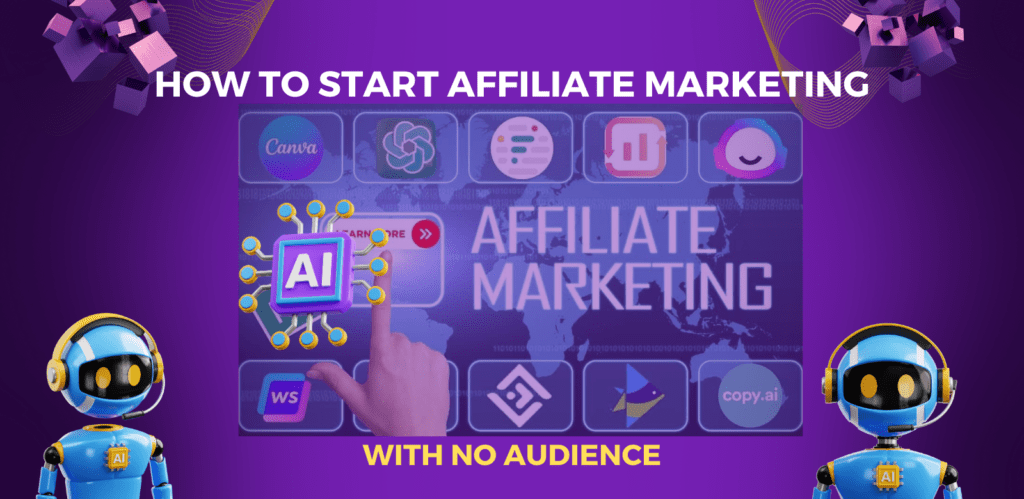In today’s fast-paced business world, small businesses are facing a lot of challenges. They must keep up with the ever-changing market trends and consumer demands. Discover the top small business technology trends that drive growth in this comprehensive guide. Stay ahead of the curve with insights into the latest advancements shaping the business landscape. One way to stay ahead of the competition is by leveraging the latest technological advancements.
By implementing these trends, small businesses may increase growth, enhance customer experiences, and simplify operations. The following article will examine the key small-business technology developments affecting success in the modern economy.
Table of Contents
ToggleCloud Computing: Expanding Possibilities
Cloud computing has shown to be a revolutionary tool for small enterprises. With the help of this technology, companies may access and store data online without spending money on costly on-site equipment. Small firms may use cloud computing to cut expenses, grow operations effectively, and enhance team member cooperation.
The flexibility of cloud computing is its most significant advantage. Small firms may pay for the resources they use, adjusting their computing and storage demands in response to demand. Because of its scalability, organizations may grow without worrying about making significant upfront investments in software and hardware.
Cloud-based solutions facilitate distant work and communication as well. Team members may access files and work together in real time from any location with an internet connection. This adaptability boosts output and gives small companies access to a worldwide talent pool.
Several well-liked cloud computing options for small companies consist of:
E-Commerce Software:
E-commerce software tailored for small businesses has become an invaluable tool, empowering entrepreneurs to establish and grow their online presence seamlessly. These platforms are designed with user-friendly interfaces, making them accessible to those with limited technical expertise.
They typically offer a range of features, including easy product listings, secure payment gateways, and customizable storefronts, allowing small businesses to showcase their products or services effectively. Many e-commerce software solutions also provide inventory management, order tracking, and customer relationship management tools, streamlining day-to-day operations.
Integration with various online marketplaces and social media platforms facilitates broader reach and increased visibility. Additionally, these platforms often include analytics tools to help businesses track performance, understand customer behavior, and make informed decisions to optimize their online operations.
Overall, e-commerce software for small businesses is a cost-effective and efficient solution, enabling entrepreneurs to compete in the digital marketplace and establish a robust online presence. Shopify and WooCommerce are two platforms that let small companies open online stores and reach a wider audience.
CRM (Customer Relationship Management) Systems:
Customer Relationship Management (CRM) systems have emerged as essential tools for businesses seeking to build and maintain strong connections with their customers. These systems are designed to centralize and organize customer data, interactions, and feedback, providing a comprehensive view of the customer journey.
CRM systems help businesses enhance customer satisfaction by facilitating personalized communication, targeted marketing, and efficient problem resolution. Examples of popular CRM systems include Salesforce, which offers a cloud-based platform for sales, service, and marketing automation.
HubSpot CRM is another notable example, known for its user-friendly interface and integration with various marketing tools. These systems enable businesses to track customer interactions, manage leads, and streamline communication across departments, fostering a customer-centric approach. With the ability to analyze customer behavior and preferences, CRM systems empower businesses to make data-driven decisions, ultimately strengthening relationships and driving long-term loyalty.
Project Management Tools:
Project Management Tools have become indispensable in modern business, offering organizations efficient ways to plan, execute, and monitor their projects. These tools provide a centralized platform for teams to collaborate, share information, and track progress, fostering effective communication and coordination.
Examples of widely used project management tools include Asana, known for its intuitive interface and task management features, and Trello, which utilizes boards and cards to simplify project tracking. Additionally, Jira is popular among software development teams for its agile project management capabilities, while Microsoft Project offers a comprehensive solution for large-scale project planning.
These tools typically feature task assignment, timeline visualization, and document sharing functionalities, streamlining workflows and improving overall project efficiency. With real-time updates and collaboration features, project management tools contribute to transparency, accountability, and successful project delivery, making them essential assets for businesses across various industries.
By adopting cloud computing, small businesses may use scalable, affordable technology to drive their growth.
Artificial Intelligence (AI): Automating Efficiency
AI has transformed how businesses operate. It can enhance customer experiences, facilitate better decision-making, and automate repetitive tasks. AI also allows small businesses to cut costs, improve efficiency, and gain a competitive edge.
Customer service is one of the most critical areas where small enterprises use AI. Artificial intelligence (AI)-powered chatbots can answer standard queries, direct users to pertinent content, and respond to customer inquiries instantly.
Customers are happier as a result, and human resources may now concentrate on more challenging jobs.
AI is also capable of doing extensive data analysis and producing insightful results. AI-powered analytics solutions may help small firms better analyze consumer behaviour, target marketing campaigns, and streamline internal operations.
Small firms may make data-driven choices and remain ahead of the competition by utilizing AI.
The following are a few instances of AI applications for small businesses:
Chatbots:
Artificial intelligence (AI) chatbots are one technological breakthrough that has risen to the forefront of the constantly changing digital environment. The way people and companies communicate online is being transformed by these smart conversational bots.
Chatbots powered by artificial intelligence use machine learning and NLP to mimic human speech, opening up a new channel of efficient and natural communication. The rise of AI chatbots has been a game-changer for several sectors, catering to consumers’ insatiable need for immediate and tailored interactions.
AI Marketing Tools:
AI marketing tools have revolutionized the way businesses approach and execute their marketing strategies. These sophisticated tools leverage artificial intelligence and machine learning algorithms to analyze vast amounts of data, providing valuable insights into consumer behavior, preferences, and trends.
From predictive analytics to personalized recommendations, AI marketing tools enable companies to create targeted and highly effective campaigns. Automation plays a key role, allowing for the optimization of various marketing processes such as email campaigns, social media management, and content creation.
Additionally, AI marketing tools empower businesses to enhance customer experiences by tailoring interactions based on individual preferences, ultimately fostering customer loyalty. The dynamic nature of these tools ensures adaptability to changing market conditions, giving marketers a competitive edge in a rapidly evolving landscape. As technology continues to advance, AI marketing tools are poised to play an increasingly pivotal role in shaping the future of digital marketing strategies.
Inventory Management and Supply Chain Optimization:
Effective inventory management and supply chain optimization are crucial components for the success of any business, ensuring a streamlined and efficient operation. Inventory management involves overseeing the stock of goods, tracking their movements, and maintaining optimal levels to meet demand while minimizing costs.
Implementing advanced technologies, such as RFID tracking and barcoding, along with artificial intelligence algorithms, enables real-time visibility into inventory levels and movement. Supply chain optimization, on the other hand, focuses on enhancing the overall efficiency of the supply chain by minimizing delays, reducing costs, and improving overall responsiveness.
AI plays a significant role in forecasting demand, analyzing market trends, and automating decision-making processes. By leveraging these technologies, businesses can achieve a delicate balance between maintaining sufficient inventory levels to meet customer demand and avoiding excess stock that can lead to increased holding costs. The synergy of effective inventory management and supply chain optimization not only improves operational efficiency but also enhances customer satisfaction by ensuring timely deliveries and minimizing disruptions in the supply chain.
Augmented Reality (AR):
Augmented Reality (AR) represents a transformative technology that overlays digital information onto the physical world, enhancing our perception and interaction with the environment. AR seamlessly integrates computer-generated elements, such as images, sounds, or text, into the real-world context, often experienced through devices like smartphones, AR glasses, or headsets.
One notable example is Pokémon Go, a mobile game that brought AR into mainstream consciousness by superimposing virtual creatures onto the real world using a smartphone’s camera. In the business realm, applications like Microsoft HoloLens utilize AR to enhance productivity and collaboration by projecting holographic images onto the user’s field of view.
AR is also making waves in retail, with companies like IKEA allowing customers to visualize furniture placement in their homes before making a purchase. As AR technology continues to advance, its potential in education, healthcare, and various industries is expanding, promising innovative and immersive experiences that blend the digital and physical realms.
By embracing AI, small businesses may automate processes, increase productivity, and provide outstanding customer experiences.
Mobile Technology: Small Business Technology Trends that Drive Growth
The ubiquity of mobile technology has presented small businesses with a unique opportunity to forge strong connections with potential buyers and expand their reach like never before. To keep up with the increasing popularity of smartphones, companies must optimize their web presence for mobile devices and ensure that their customers have a smooth mobile experience.
One of the main components of mobile technology for small enterprises is mobile commerce or m-commerce. Small companies may provide their clients with easy and safe online purchasing experiences using mobile applications and mobile-friendly websites. By embracing mobile commerce, small companies may increase sales and tap into a growing population of mobile-savvy consumers.
Small companies may use mobile technology for marketing, customer involvement, and mobile commerce. Customers may be informed about special deals, discounts, and significant developments using push notifications and SMS messaging. Mobile applications may gather user information and offer tailored experiences, encouraging repeat business and consumer loyalty.
Additionally, small enterprises may utilize location-based marketing thanks to mobile technology. Using geolocation data, businesses may target clients with suitable offers and promotions in specific locations. Conversions are increased, and this tailored strategy improves consumer engagement.
Cybersecurity: Safeguarding Trust
Cybersecurity stands as a critical safeguard in our increasingly digitized world, where protecting information and systems from cyber threats is paramount. It encompasses a range of practices, technologies, and measures designed to defend against unauthorized access, data breaches, and cyberattacks.
Cybersecurity tools include firewalls, antivirus software, and encryption protocols that shield networks and devices from malicious activities. In recent years, the rise of sophisticated threats like ransomware and phishing attacks has highlighted the importance of robust cybersecurity strategies. Organizations, both large and small, invest in security measures to protect sensitive data, maintain the integrity of their systems, and ensure the confidentiality of user information.
Cybersecurity also extends to individuals, urging the adoption of secure practices such as using strong, unique passwords and staying vigilant against social engineering tactics. As technology continues to advance, the ongoing evolution of cybersecurity remains crucial to mitigating risks and fostering a resilient digital ecosystem.
Encryption:
Encryption is a fundamental aspect of cybersecurity, providing a secure mechanism to protect sensitive information by converting it into an unreadable format that can only be deciphered with the appropriate key. This process helps ensure the confidentiality and integrity of data during transmission or while stored on various devices.
Secure Sockets Layer (SSL) or its successor, Transport Layer Security (TLS), protocols that encrypt data exchanged between web browsers and servers, securing online transactions and communications. Another example is the use of BitLocker or FileVault, encryption tools employed to secure data on computers and external drives.
Messaging apps like WhatsApp use end-to-end encryption, ensuring that only the intended recipient can decrypt and read the messages. As cyber threats continue to evolve, encryption remains a crucial component of cybersecurity strategies, safeguarding sensitive information from unauthorized access and ensuring the privacy of digital communications.
Multi-Factor Authentication:
Multi-Factor Authentication (MFA) is a robust security measure designed to enhance the protection of digital accounts and systems by requiring users to verify their identity through multiple authentication factors. These factors typically include something the user knows (like a password), something the user has (such as a mobile device or security token), and something the user is (biometric data like fingerprints or facial recognition).
MFA adds an extra layer of security, mitigating the risks associated with compromised passwords or unauthorized access. For instance, when logging into an account with MFA enabled, a user may enter a password and then receive a one-time code on their registered mobile device, which they must also enter for access.
This approach significantly reduces the likelihood of unauthorized access, enhancing overall cybersecurity resilience. Many online services, financial institutions, and businesses now incorporate MFA as a standard practice to safeguard sensitive information and protect against identity theft or unauthorized account access.
Frequent Data Backups:
Frequent data backups are a crucial aspect of sound data management and a fundamental component of any robust cybersecurity strategy. Regularly creating duplicate copies of critical information ensures that in the event of data loss, corruption, or a cybersecurity incident, organizations can quickly recover and restore their valuable assets.
These backups are often stored in secure, off-site locations or on cloud-based platforms to prevent a single point of failure. Automated backup solutions have become increasingly prevalent, allowing for scheduled and consistent duplication of data without manual intervention. The importance of frequent data backups is underscored by the rising threat of ransomware attacks and other unforeseen disasters.
By maintaining up-to-date backups, businesses can significantly reduce downtime, mitigate financial losses, and maintain the integrity of their operations even in the face of unexpected disruptions or security incidents.
Endpoint Protection:
Endpoint protection is a crucial component of cybersecurity that focuses on safeguarding individual devices, or endpoints, within a network from various cyber threats. These threats can include malware, ransomware, phishing attacks, and other malicious activities that may compromise the security and integrity of the device and the network it connects to. Endpoint protection solutions typically involve the deployment of antivirus software, firewalls, intrusion detection systems, and other security measures designed to detect, prevent, and respond to potential threats at the endpoint level. These solutions play a vital role in securing laptops, desktops, mobile devices, and servers, ensuring that each endpoint adheres to security policies and receives timely updates to defend against evolving cyber threats. As organizations increasingly adopt remote work models and diverse device ecosystems, robust endpoint protection has become a critical element in fortifying overall cybersecurity posture.
Employee Training :
Employee training for cybersecurity is an essential and proactive measure to strengthen an organization’s defense against evolving cyber threats. In an era where cyber attacks are becoming more sophisticated, employees are often the first line of defense. Training programs equip staff with the knowledge and skills necessary to recognize and respond to potential security risks, such as phishing attempts, social engineering tactics, or malware attacks.
These programs educate employees on the importance of creating strong passwords, practicing secure browsing habits, and adhering to company policies regarding data handling and sharing. Furthermore, cybersecurity training helps foster a culture of awareness and responsibility, encouraging employees to stay vigilant and report any suspicious activities promptly.
Regular and up-to-date training sessions ensure that employees are well-prepared to navigate the dynamic cybersecurity landscape, ultimately contributing to a more resilient and secure organizational environment. Smaprioritizing can safeguard their information by prioritizing cybersecurity, upholding client confidence, and preventing expensive cyber catastrophes.
Automation and Workflow Integration: Streamlining Operations
Small firms may significantly improve productivity and reduce human labour by implementing automation and process integration. Small firms may increase productivity, decrease mistakes, and save time by automating repetitive operations and connecting workflows across many platforms.
Business process automation (BPA) is one area where automation may have a significant influence. By automating repetitive operations and procedures, BPA technology frees up staff members to concentrate on more strategically important work.
Small organizations may automate tasks like data input, report preparation, and invoice generation, giving their staff members more time.
Another essential component of optimizing processes is workflow integration. CRM, project management, and accounting software are just a few examples of the systems and apps that small firms may combine to guarantee smooth information flow across departments.
Through this integration, data silos are removed, manual data entry is decreased, and team member cooperation is enhanced.
Small organizations may enhance coordination, optimize resource allocation, and provide better customer experiences using automation and process integration.
Conclusion
Small companies must adapt to the latest technological developments to expand and remain competitive in the digital era. Automation, cybersecurity, mobile technology, cloud computing, and artificial intelligence are just a few of the major developments that may help small businesses grow.
Small firms may cut expenses, expand their operations, and enhance teamwork by utilizing cloud computing. Businesses may use artificial intelligence to improve consumer experiences, automate processes, and obtain insightful information.
Mobile technology broadens the client base and offers tailored convenient experiences. Cybersecurity keeps customers’ trust and protects critical data. Operations are streamlined, and efficiency is increased through automation and process integration.
Businesses may seize new possibilities, keep one step ahead of the competition, and spur development in the digital era by adopting these small-company technology trends.


















